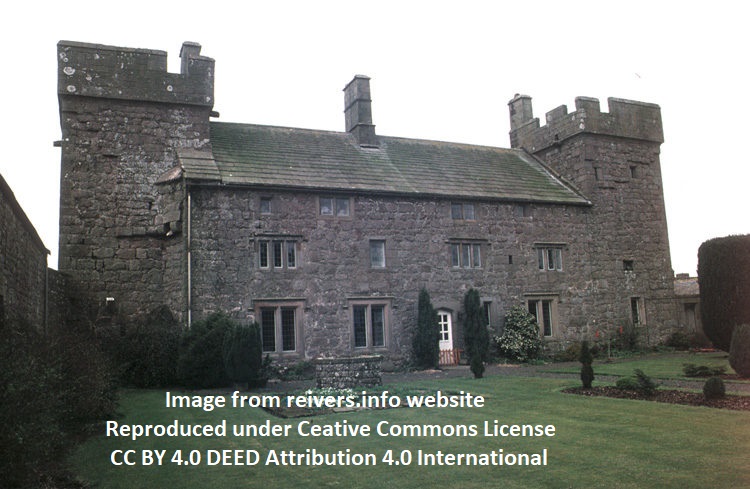Askerton Castle

Askerton Castle Details
Askerton Castle started out life as a hall-house, but was strengthened in the 15th century with the addition of a square tower at each end of the old hall. This was extended further with the addition of a courtyard wall to the rear, now forming a U-shaped mansion with small courtyard.
- Closest To: Brampton, Gilsland
- Access: No Access
- Grid Reference: NY550692
Askerton Castle is an impressive quadrangular castle originating as a 14th century tower house, extended repeatedly into the 16th century to form a square courtyard with rectangular corner towers to the southern and eastern corners. Three sides of the courtyard are lined with buildings, only that side facing north-east is not, and it is here that the gateway into the courtyard sits. The old part of the structure no longer has the appearance of a tower, and is now hidden within the hall range between the two towers. These are estimated to be late 15th or early 16th century, and predate the erection of the walled courtyard to the north-west. Later in the 16th century, this was extended by the addition of an L-shaped set of buildings along the north-western and north-eastern walls. The southern tower bears the initials TD for Thomas Dacre, who was the second Baron Dacre of Gilsland from 1485 to 1525. He was resident at Askerton when he served as deputy Warden (from 1485) and Lord Warden (from 1509) of the Scottish March, being well-regarded by King James IV of Scotland. When he died as the result of a fall from his horse, he was succeeded by his son William.
William was born in about 1500, his father having romantically kidnapped his mother Elizabeth Greystoke, from ward in Brougham Castle. He inherited over 90,000 acres of land from his father in Yorkshire and Northumberland, having already inherited the Greystoke lands from his mother in 1516. From 1527, he served as Warden of the West March, but was accused of treasonably making agreements with the Scots in 1534 and confined to the Tower of London. He was acquitted, but ordered to pay a substantial fine. From 1549 he was appointed Warden again, and gained responsibility for Carlisle, and the Middle Marches for a short time. In 1563 he died, and was succeeded by his son Thomas, but Thomas only survived his father by three years, and left a five year old son, George, to succeed him as Lord Dacre. William’s wife quickly remarried, to Thomas Howard Duke of Norfolk, but she died in 1567, and George was then brought up at his stepfather’s house before his own premature death, aged nine. His uncle Leonard claimed the estates and titles of Dacre and Greystoke without success, and was among a number of Catholic nobles who plotted against Queen Elizabeth I, writing repeatedly to Mary Queen of Scots. When rebellion broke out in 1569, he actually went to court to protest his innocence, and played a minor role in putting the rebellion down. He was not trusted though, and soon fled across the border to Scotland. At around this time, or perhaps earlier, Askerton was sacked and left in ruins. It remained in use until at least 1589, though, with Thomas Carleton, the Deputy Warden resident at that date in a building “in very great decay”. The date of abandonment is unknown, but it was unused for centuries before being restored in the 1850s and renovated in the 1920s, and it is clear there was a third tower at the northern corner, perhaps destroyed when the castle was sacked, and likely contemporary with the courtyard wall. Today Askerton is the centre of an organic farming business, but it does not appear to offer access to the castle or have an onsite shop.
Reivers website entry for Askerton
Become a supporter of my work to access a more detailed history